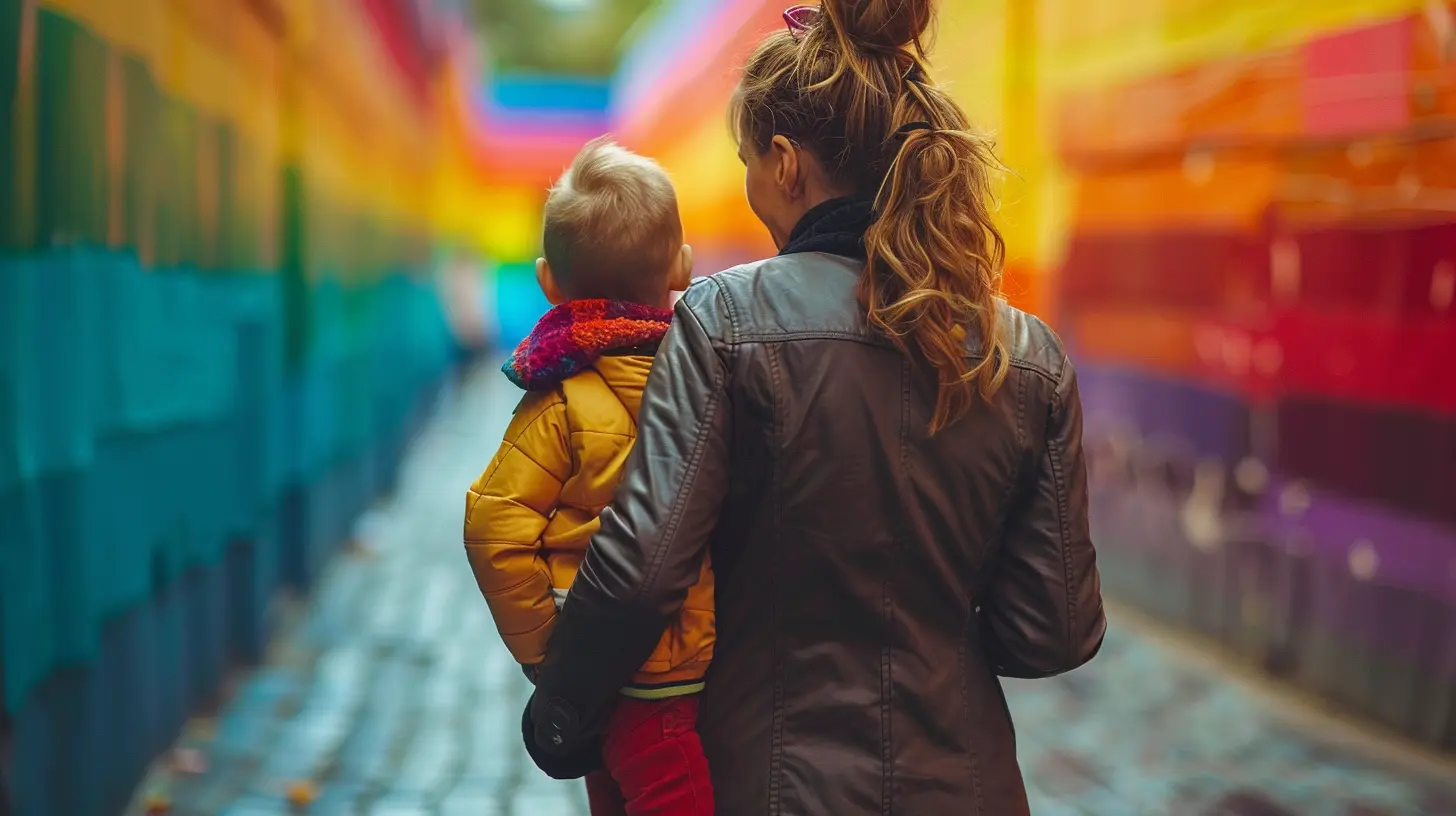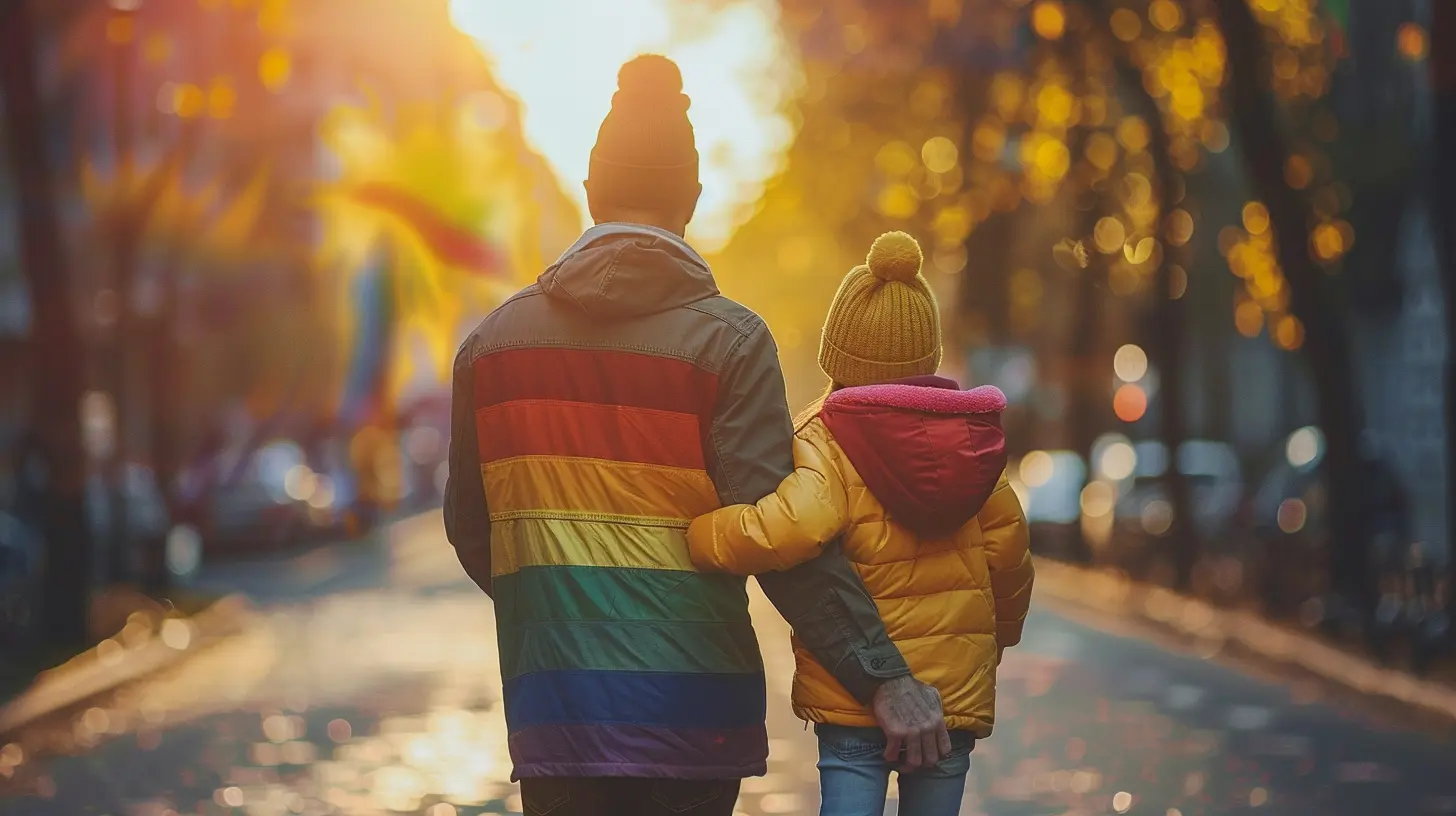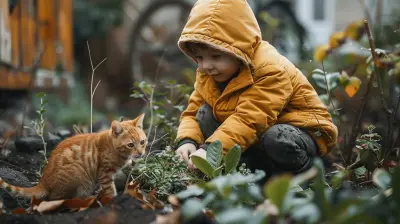18 January 2025
Inclusive parenting in the context of LGBTQ+ adoptive families is a beautiful blend of love, dedication, and resilience. It's about showing children that families come in all shapes and sizes and that love truly knows no boundaries. Although societal norms may still lag behind, LGBTQ+ adoptive families are breaking stereotypes and providing nurturing environments where children can thrive.
But how do we, as parents and allies, navigate this journey? How do we ensure that our actions and words reflect inclusion in its truest sense? Let's dive into the world of inclusive parenting and see how we can raise well-rounded, compassionate children in LGBTQ+ adoptive families.

What Is Inclusive Parenting?
At its core, inclusive parenting means creating an environment where children feel safe, acknowledged, valued, and loved—no matter their background or that of their family. Families are no longer just the traditional “mom and dad” narrative; many children now grow up in homes with two moms, two dads, or single LGBTQ+ parents.Inclusive parenting involves exposing children to diverse perspectives, encouraging open communication, and instilling respect for differences. In doing so, children learn to recognize and embrace diversity, not just in their own family but in the world around them.
Why Is Inclusive Parenting Important?
Imagine growing up in a world where everything and everyone around you reinforces that you don’t "fit in." That's what many children from LGBTQ+ households might face unless we make a conscious effort to raise them inclusively. This kind of parenting reinforces that differences are not divisive but are, in fact, something to be celebrated.Kids benefit significantly when they're raised in an environment that encourages inclusivity. They are more likely to develop core values like empathy, understanding, and acceptance. And, an inclusive approach can help mitigate the negative effects of prejudice and bias, setting your child up for success in a diverse world.

LGBTQ+ Families: Breaking Down Myths
Let's debunk some of the common myths surrounding LGBTQ+ families because, let's be honest, the LGBTQ+ community has faced more than its fair share of misconceptions.Myth 1: Children Need a Male and Female Parent
One of the most prevalent and outdated myths is that children "need" both a mother and a father to thrive. This myth stems from the stereotype that gender roles are crucial for child development. Research, however, has shown that what children truly need is love, support, and stability—not specific parental genders.In fact, studies confirm that children raised by LGBTQ+ parents fare just as well as those raised in heterosexual families. They develop just as well emotionally, academically, and socially. The success of a child isn't hinged on having a "traditional" mom-and-dad dynamic but rather on the love and care they receive.
Myth 2: LGBTQ+ Parents Will Influence a Child’s Sexual Orientation
Some people believe that children adopted by LGBTQ+ parents are more likely to identify as LGBTQ+ themselves. This simply isn’t true. A parent's sexual orientation does not dictate a child’s; sexual orientation is not something that can be "caught" or influenced by upbringing.What LGBTQ+ parents do provide is an open-minded, supportive home where children feel free to explore their identities without fear of judgment. Isn’t that what every child deserves?
Myth 3: LGBTQ+ Families Are Confusing for Children
Children are far more adaptable than we often give them credit for. When kids grow up knowing that families come in all forms, they're less likely to be confused. In fact, kids from LGBTQ+ families often have a more profound understanding of diversity and inclusivity than their peers from traditional households.When you raise children in an environment where they see love and commitment between two people—regardless of sexuality—they learn that relationships are based on respect, trust, and mutual care.

Unique Challenges LGBTQ+ Adoptive Families Face
As heartening as the progress toward equality has been, it's important not to gloss over the unique challenges LGBTQ+ adoptive families might face. Let’s break down a few:1. Legal Barriers and Discrimination
Though adoption for LGBTQ+ individuals and couples is permitted in many places, there are still regions where obstacles and discriminatory practices exist. Some adoption agencies may turn LGBTQ+ couples away, or same-sex couples may face more rigorous scrutiny. Legal recognition of both parents in a couple, especially if they’re not married, might require additional steps like second-parent adoption.2. Societal Bias and Stigma
Unfortunately, some LGBTQ+ families may still face bias and societal judgment. People may say hurtful things or treat them differently based on outdated notions of what “family” should look like. This can lead to feelings of isolation for both parents and children.As an LGBTQ+ parent, it’s vital to equip your child with the language and confidence to address bias and unfair treatment if they encounter it.
3. Internalized Fears and Concerns
LGBTQ+ parents might worry about their child being bullied or treated differently because of their family structure. It’s perfectly natural to have these concerns, but the key is to be open with your child. Communication is crucial here. Reassure them that love makes a family, regardless of what others might say.
Tips for Raising Children in LGBTQ+ Adoptive Families
So, how can you raise a confident, compassionate child in an LGBTQ+ adoptive family? Here are some practical, tangible steps to foster inclusivity:1. Embrace Open Conversations
Talk to your child about their family structure openly and as soon as they’re able to understand. Use age-appropriate language and encourage them to ask questions. Be honest about your family unit and reinforce that all families are different—and that’s a good thing!Remember, kids are curious by nature, so don’t take their questions as a sign of doubt or fear. They’re just trying to understand the world around them.
2. Surround Your Child with Diverse Role Models
Representation matters. Make sure your child interacts with a wide variety of people. Encourage friendships with kids from different backgrounds and expose them to books, TV shows, and movies that reflect diverse family structures.Find child-friendly LGBTQ+ spaces (where available) where your child can meet other kids from families like theirs. This can help them feel connected and less isolated.
3. Model Inclusivity in Your Everyday Life
Children absorb everything they see and hear, so make sure that you’re modeling inclusive behavior in your daily interactions. Treat everyone with respect and kindness, regardless of who they are or whom they love.4. Prepare Your Child for Other People’s Reactions
As much as we’d like to wrap our kids in a bubble of kindness, the reality is that they may face nosy questions, judgment, or even teasing about their family. Equip your child with positive phrases they can use if someone asks uncomfortable questions.For example, if another child says, "Why don’t you have a mommy and a daddy?" your child can respond, "Every family is different, and I have two great dads!"
5. Advocate for Your Child
Whether it’s at school, in sports, or in social groups, be prepared to advocate for your child. Schools should be safe, inclusive spaces that respect all kinds of families, and it’s important that you feel empowered to stand up for your child when necessary.If your school isn't already practicing inclusivity, consider discussing how they can better accommodate diverse families. This includes things like changing school forms to say "Parent 1" and "Parent 2" rather than "Mother" and "Father."
6. Encourage a Strong Sense of Self
Children from LGBTQ+ families sometimes feel different or left out, so it’s important to foster a strong sense of self. Help your child build confidence in who they are and where they come from. Reinforce the idea that family is about love, no matter what it looks like.The Power of Love and Inclusion
At the end of the day, inclusion isn’t just about checking boxes or meeting societal standards. It’s about creating a world where all families, no matter their makeup, are respected and celebrated. Inclusive parenting in LGBTQ+ adoptive families is an opportunity to instill values that go far beyond tolerance—it’s about true acceptance, understanding, and love.We need to remember that our children are watching and learning from us. By teaching the beauty of inclusivity in our homes, we are raising the next generation of tolerant, kind-hearted individuals who will carry those teachings into the world. After all, isn't that the kind of world we want to live in?
Conclusion
Raising children in LGBTQ+ adoptive families comes with unique challenges, but it's also filled with immense joy and opportunity. By practicing inclusive parenting, you ensure your child feels loved, accepted, and prepared to face the world with confidence. Every family, no matter its shape or size, has the chance to nurture children who will grow up to make our world a more compassionate place.If you're part of an LGBTQ+ adoptive family, remember: You are providing your child with everything they need to flourish—a loving home. And at the end of the day, that’s what truly matters.









Primrose McWhorter
This article beautifully highlights the importance of inclusivity in parenting within LGBTQ+ adoptive families. It emphasizes that love knows no boundaries, fostering acceptance and understanding in children. Such insights are vital in nurturing compassionate and open-minded future generations. Thank you for sharing!
March 18, 2025 at 5:33 AM